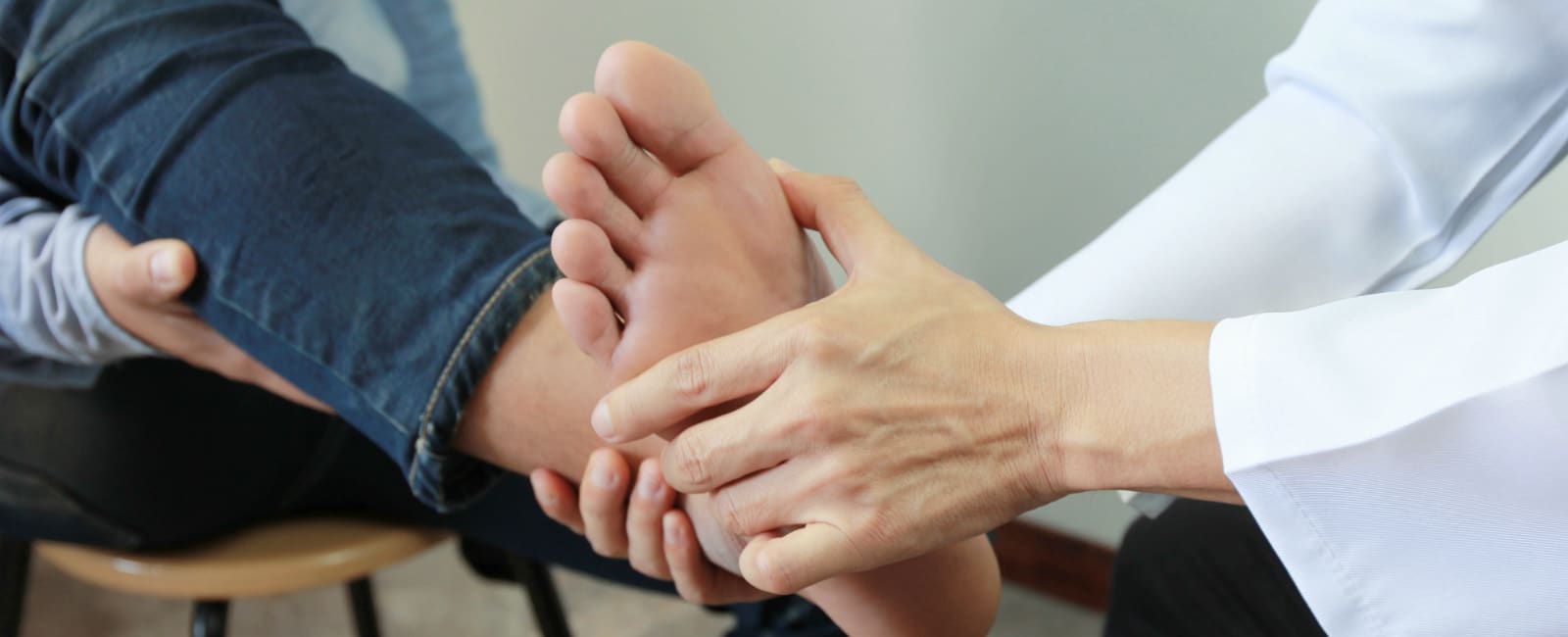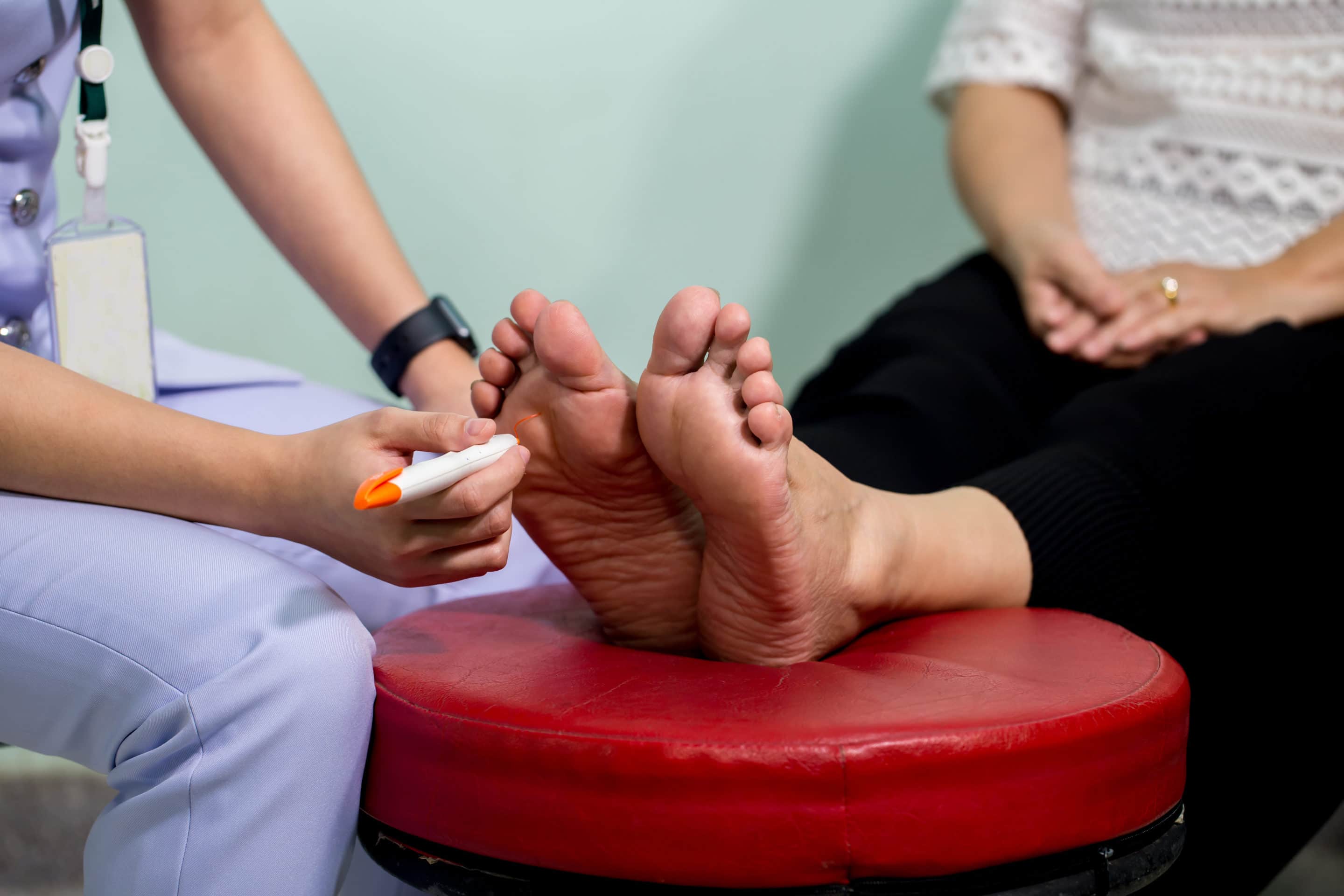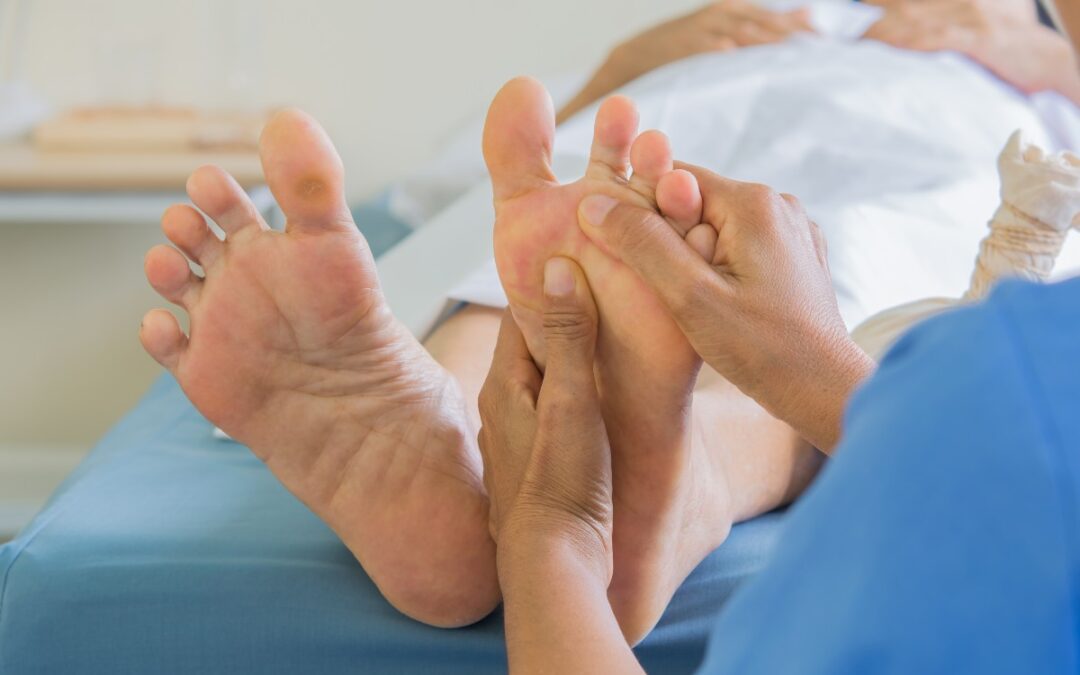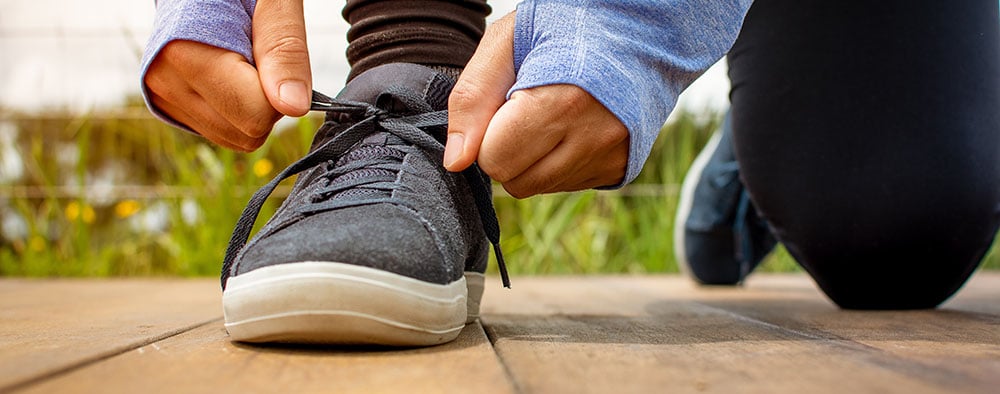Why Foot Wounds Are So Dangerous (and How You Can Prevent Them)
If you have diabetes, there’s not really such a thing as a “minor” foot wound.
Without proper care and attention, even a small cut or burst blister might take a long time to heal—long enough to develop into an open sore, or even get an infection.
And those infections can be very dangerous. Here are a few stats for you if you’re not convinced:
- If you have diabetes, your lifetime risk of developing serious, high-risk chronic wounds is about 1 in 4.
- More than half of people with diabetes who develop a foot wound will develop another within 5 years.
- More than 10 percent of diabetic ulcers don’t heal, and of those that don’t, about 25 percent ultimately require a major amputation to prevent the infection from spreading.
- Diabetic foot ulcers are responsible for the vast majority of non-traumatic lower limb amputations in the United States—about 75,000 per year.
- In at least one study, the five-year mortality rate after a diabetic-related amputation was roughly 50-50. This mortality rate is higher than even some of the most aggressive forms of cancer.
To summarize, with simple language instead of numbers:
- If you have diabetes, you are much more likely to develop wounds on your feet, and those wounds may be very slow to heal and likely to get infected.
- Infected wounds on your feet put you at high risk of needing an amputation.
- If part of your foot or leg needs to be amputated, your quality of life and life expectancy may be substantially and permanently reduced.
If this sounds a little scary, it should. But the news isn’t all grim.
Because here’s the thing—diabetic wounds are almost always preventable. And even when wounds aren’t prevented, seeking high quality wound care treatment from an experienced specialist can drastically reduce your long-term risk of the worst potential complications.
Why are foot wounds such a problem for people with diabetes?
It really comes down to two major things: peripheral neuropathy and poor circulation. Both of these conditions are common in people with diabetes, as there can be side effects of unregulated blood sugar.
If you have peripheral neuropathy, the nerves in your toes, feet, and legs may not work as well as they should. The link between your foot’s pain and touch receptors and your brain may be weakened, or even completely severed.
So if you cut yourself, or a blister pops, you might not even notice it for a while.
And if your circulation is slower than normal, your body might have extra trouble clotting a wound, repairing the broken tissue, or fighting off germs that want to enter your body.
This devastating combination or risk factors is why so many people with diabetes struggle with wounds. The disease compromises your ability to both identify problems quickly and your ability to deal with them after they occur.
How can you prevent foot wounds from occurring?
As always, the best treatment is always prevention. And with a little discipline and maybe a few lifestyle changes, almost everyone with diabetes can drastically reduce their risk of developing a devastating foot wound.
Here are some of the most important strategies.
Manage your condition
As we said, peripheral neuropathy and poor circulation are the key “underlying causes” of foot wounds among people with diabetes. Both are byproducts of living with elevated blood sugar levels, and both are progressive—meaning they get worse and worse over time, as the years of living with high blood sugar add up.
But if you take the appropriate steps to manage your diabetes and keep your blood sugar as normal as possible as much as possible, these conditions will stop getting worse (or will progress much more slowly). And that means safer, healthier feet.
Monitor your sugar regularly, and follow the advice of your doctors regarding diet and exercise. Start now—don’t wait for symptoms to get worse. Develop the habit before it becomes a matter of life and death.
Examine your feet.
You should make time for one comprehensive diabetic foot self-exam every day. Since you can’t always “feel” an injury, and you probably aren’t visiting your doctor every day, you need to be intentional about checking yourself for problems.
Do this at a regular time each day, in a well lit room. Have a loved one help you if you struggle with poor eyesight, or use a small mirror if you aren’t able to see your feet from every angle on your own.
Cuts, blisters, cracked skin, redness, or swelling could all signal the upcoming emergency of a more serious foot ulcer. Keep a close eye on any foot issues you identify, and contact us immediately if problems are getting worse or not healing.
Be smart with your foot gear.
Poor choices when it comes to shoes and socks can significantly increase your risk of wounds. Itchy socks and sharp seams can scrape and cut. Shoes that are too big or too small can irritate your skin and lead to injury.
On the flipside, going barefoot—even at home—may not be advisable due to the risk of stepping on something sharp.
If you have diabetes, choosing foot gear that supports and protects feet becomes critically important. Fortunately, if you feel a little lost, we can help you with advice and options like:
- Diabetic socks that feature seamless interiors, breathable fabrics, and a little extra cushioning for the soles of the feet.
- Diabetic shoes that fit your feet great, also have seamless interiors, and feature just a little extra depth for custom orthotics and space for toes to wiggle without getting pinched.
- Custom orthotics to place in those shoes, which will give you the ideal level of support and cushioning and will relieve pressure from weight-bearing zones most likely to develop wounds.
Quit smoking.
By now we probably don’t have to tell you that smoking is bad for your health. Even if you don’t have diabetes, quitting should be somewhere near the top of your priority list.
But smoking is especially dangerous for people with diabetes, because of how it can greatly reduce the circulation to your feet even further, and even increase your body’s resistance to insulin. Smoking makes it that much harder to regulate your blood sugar, and it automatically makes any wound you do develop a lot more dangerous.
If you want to keep your feet, and you’re a smoker, quitting is possibly the single most important step you can (and should) take.
Get your feet checked regularly by a podiatrist.
One important thing to keep in mind about high blood sugar, neuropathy, and poor circulation—you can’t always “see” or “feel” them, especially in the early stages.
In other words, you might live with high blood sugar for years, and do extensive damage to your peripheral nerves or circulatory health, before you even begin to notice symptoms. And of course, by that time, the damage may already be extensive and difficult (if not impossible) to meaningfully reverse.
By getting a thorough podiatric checkup once per year (or on a schedule decided between you and your podiatrist), you can identify these problems as early as possible—in some cases long before you would notice on your own.
That way, you can begin treating them earlier, and give yourself as much lead time as possible to develop healthy lifestyle habits before your risk of ulcers begins to rapidly increase. You could delay the onset of noticeable symptoms indefinitely—years or decades—simply by being proactive.
And of course, if you already have symptoms, getting those checkups becomes even more important. Because in addition to screening examinations, we’ll also provide any necessary maintenance care—treating wounds, prescribing diabetic shoes, caring for corns and calluses, trimming toenails, etc.
What if I already have a wound?
Sores and ulcers that don’t heal need to be treated immediately by a specialist. The longer you have it, the greater risk it’ll get infected.
Our goal is to heal it as quickly as possible, and early and aggressive intervention is by far the best way to do this. Sometimes we can do this at our office; other times, you and the doctor may have to travel out to the nearby wound care center to get the treatment you need.
We have access to a wide variety of advanced and alternative procedures for debridement of dead tissues, medications, and dressings. This helps us clean out the wound fast, then defend and protect it, so that it heals as quickly and safely as possible.
If you’re checking your feet every day, and you call us as soon as you notice a problem, your odds of making a full recovery and avoiding the most serious complications of wounds will be greatly increased.
Let the team at Texas Foot & Ankle Center in Dallas help keep your feet healthy for the long haul! To schedule an appointment with us—whether for a routine checkup or advanced wound care services—please call (214) 660-0777 today.




